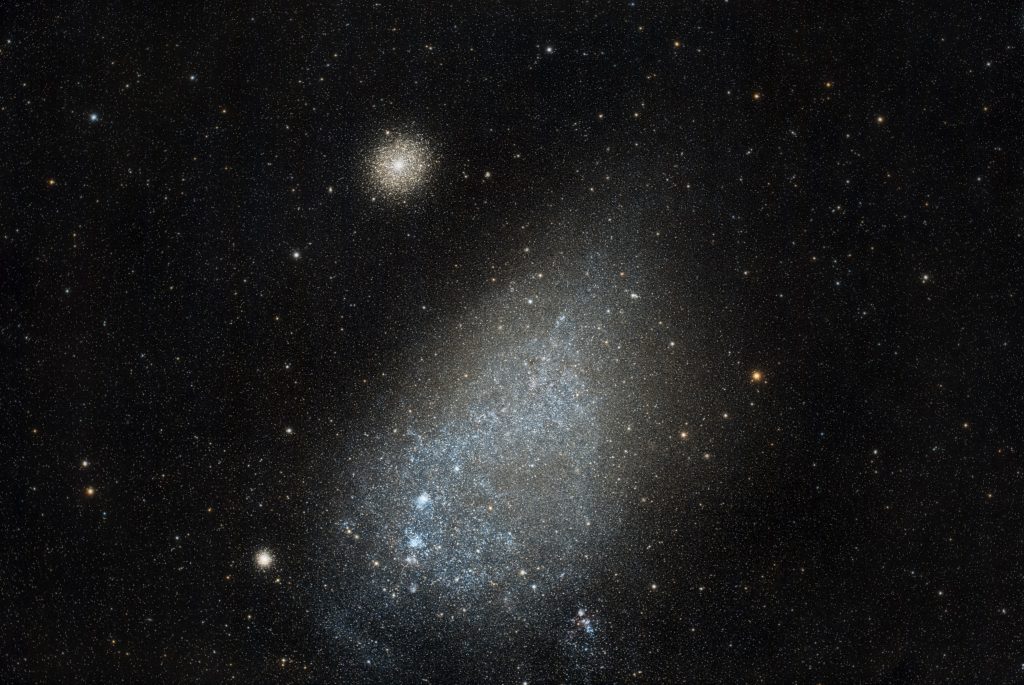Small Magellanic Cloud, shorty SMC, is a dwarf galaxy, which is gravitationally bonded to the Milky Way. It has an irregular shape, which resembles a droplet. Compared to the Milky Way’s size (100’000 light-years in diameter) it’s significantly smaller (7’000 light-years in diameter) and it’s roughly 200’000 light-years far from us.
SMC is visually accompanied by two globular clusters. NGC 104 at the top and NGC 362 at the left side. The clusters are obviously much closer to us than the galaxy.
This galaxy is quite important for astronomy, because Henrietta Swan Leavitt, an astronomer at the Harvard College Observatory, discovered several variable stars in this galaxy. Variable stars change the intensity in periodic cycles. So, based on the apparent brightness of the variable star, the distance can be determined. Since this discovery, mankind can measure the distance between the galaxies.
The picture is a stack of 159 photos, 2 minutes each. This means in total I was photographing this object for 5.3 hours.

| Telescope | William Optics RedCat 51/250 f4.9 |
| Aperture | 51 mm |
| Focal length | 250 mm |
| Mount | iOptron Skyguider Pro |
| Autoguiding | ZWO 178MM, QHY Mini Guide Scope 30/130 mm |
| Camera | ZWO ASI071 MC Pro @-10 °C |
| Filters | none |
| Exposure | 159x120s, ISO 1600 |
| Date | 2022-05-30 |
